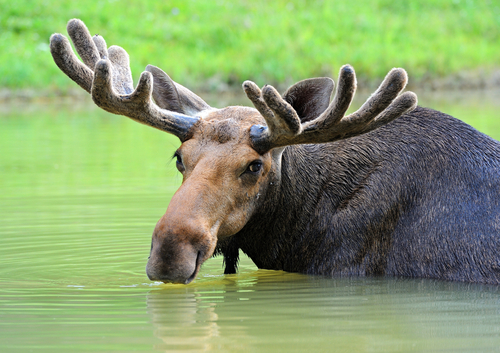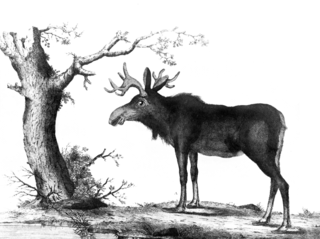 Over the last few weeks, stories of moose die-offs have made the news. The New York Times reported that one moose population in Minnesota has all but vanished and another has fallen by more than half. Similar declines have happened in New Hampshire and British Columbia.
Over the last few weeks, stories of moose die-offs have made the news. The New York Times reported that one moose population in Minnesota has all but vanished and another has fallen by more than half. Similar declines have happened in New Hampshire and British Columbia.
While scientists aren’t sure of the cause, they suspect climate change is behind the deaths. Hotter weather has encouraged the proliferation of winter ticks, which can swarm a moose by the tens of thousands and provoke it into scratching off so much hair that it turns into a pale “ghost moose”. Warming also favors pine bark beetles that destroy forest canopy, allowing hunters to spot moose more easily. And heat-stressed moose may fail to build up enough fat for the winter.
In a study accepted for publication in Global Change Biology, Finnish researchers investigated how moose respond to warmer weather. They analyzed aerial surveys of a 2,000-square-kilometer patch of forest near the coast of Finland, composed mostly of pine, spruce, and birch. The data were obtained using aerial laser scanning: A plane flies over the terrain, shooting laser beams toward the ground and recording how long it takes for the pulses to bounce back. With these measurements, scientists can determine the 3D structure of the forest.
 The authors tagged 18 moose with GPS collars and tracked their movements for two summers. Then they tried to figure out the density of the forest canopy at each moose’s locations. They did this by looking at the percentage of laser beam “echoes” from vegetation that exceeded a certain height. For example, if 75% of the beams bounced back from vegetation higher than 10 meters, that means the spot contains a densely-packed stand of tall trees.
The authors tagged 18 moose with GPS collars and tracked their movements for two summers. Then they tried to figure out the density of the forest canopy at each moose’s locations. They did this by looking at the percentage of laser beam “echoes” from vegetation that exceeded a certain height. For example, if 75% of the beams bounced back from vegetation higher than 10 meters, that means the spot contains a densely-packed stand of tall trees.
The researchers found that in August, moose tended to seek dense, shady canopies on hotter days. That was especially true of moose who lived inland, where most bodies of water are tepid pools infested with mosquitoes and horseflies — not exactly the best place for a refreshing dip. The moose might need relief from the heat in August because that’s when they start growing their winter coats.
The moose start to search for shade at temperatures of 20 degrees Celsius or higher, the authors estimate. The results at least suggest that “moose are able to modify their behaviour to cope with high temperatures,” they write. But will that be enough to keep moose from turning into real ghosts?
Image credits
First image: Eduard Kyslynskyy | Shutterstock
Second image: John Frederick Miller | Wikimedia Commons
Thank you for this! The NYT article raised the profile of the problem, but didn’t really tell readers much. As someone actually from Choteau, MT, the location lede made no sense, either.
Thanks for adding a bit more ecology (in very digestible nuggets) to the story. Perhaps a submission to the NYT is in order.
Thanks Bethann, glad you enjoyed it!